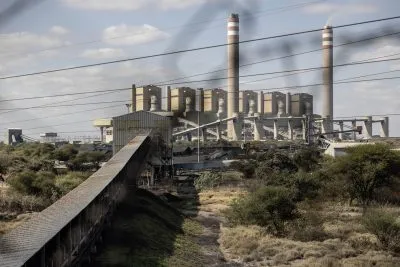Neil Ford reports on national and regional energy transition strategies in North Africa
Both Egypt and Morocco are championing renewable energy as a pillar of future expansion of power generation, while Tunisia is also managing to attract some renewable energy investment to its much smaller market. In Algeria, bureaucracy seems to be impeding what enthusiasm there is from the government to diversify the generation mix. Libya’s ongoing conflict makes it an unlikely destination for power sector investment in the near-term, despite its hydrocarbons resources and massive solar potential.
The completion of three giant Siemens 4.8 GW gas-fired plants in late 2018 has greatly improved Egypt’s power supply situation, while the discovery of large gas reserves in its Mediterranean waters has improved the country’s energy security. With this foundation in place, the government is focusing on achieving its target of deriving 20% of all power production from renewables and large hydro by 2022, comprising 12% from wind, 6% from hydro and 2% from solar.
While Egypt’s first wind projects were financed by bilateral and multilateral institutions, the focus is now on the private sector to develop wind farms around the Red Sea and solar parks in the desert. Cairo has introduced feed-in tariffs for renewable energy projects, with financial backing from the World Bank’s Multilateral Investment Guarantee Agency.
Benban solar park’s completion increased national solar power production to 2.4bn kWh last year, virtually ensuring that the country’s short-term solar target will be exceeded. Meanwhile, solar power’s share of the generation mix looks set to grow rapidly during this decade. The government’s longer-term renewables-plus-hydro target is 42% of total power production by 2035. Cairo hopes to achieve this at the same time as it phases out electricity subsidies in line with its IMF-backed economic reform programme.
The International Renewable Energy Agency (IRENA) says that Egypt could be more ambitious, aiming for 53% renewables by 2030, but that it needs to simplify its bureaucratic procedures. It also suggests there is scope for the country to develop its own solar photovoltaic (PV) manufacturing capacity.
Rabat makes strides to broaden energy mix
Morocco is continuing its policy of focusing on renewables to improve energy security and the government would also like to boost large-scale power exports to Europe.
Rabat has pledged to generate 52% of all the country’s electricity from renewables by 2030, up from 35% at present, in an effort to strengthen its long-running strategy of reducing its dependence on hydrocarbons imports. This would be a huge turnaround from the situation in 2009, when it relied on hydrocarbons for 90% of power production.
The country is one of the foremost developers of concentrated solar power (CSP), with the 580 MW Ouarzazate plant already in operation and set for further expansion. But the balance between concentrated solar power CSP and PV in Morocco’s future energy mix will depend on the comparative construction costs and the rate at which the cost of battery storage falls.
CSP involves the heating of liquids using sunlight focused by mirrors to produce steam for turbines – a process which can continue to produce power for several hours after sunset, helping to meet the evening residential demand peak. PV can do a similar job if it is linked to batteries – a combination which is starting to take off in some markets, as large-scale battery storage become more economically viable.
Algeria struggles to get solar moving
Algeria continues to rely on thermal power production and awarded a contract to build a new 1.3 GW gas-fired plant to a Hyundai-led consortium in January.
Now, after several false starts, it is again trying to secure solar power investment. The Algerian Electricity and Gas Regulation Commission held a tender for 150 MW of solar capacity last year but ultimately only a single contract for 50 MW was signed, despite the fact that 93 bidders had pre-qualified and five made it to the shortlist.
The successful bidder was the Power Generation consortium, led by Algerian firm Condor, which is developing the project in the Biskra region, with all output sold under a PPA at $0.069/kWh. It was reported that the bid ceiling prices were only announced on the day the tender was due to close. Foreign investors may also have been deterred by requirements on working with local partners and sourcing local components. At present, the country is far from achieving its ambitious goals of securing 13.6 GW of solar capacity and 8.4 GW of other renewables by 2030.
Related articles
Kenya and Ethiopia lead East Africa’s energy transition
South Africa’s energy woes trigger rethink among neighbours
Click to see more articles from the Africa Energy Yearbook 2020
Want to continue reading? Subscribe today.
You've read all your free articles for this month! Subscribe now to enjoy full access to our content.
Digital Monthly
£8.00 / month
Receive full unlimited access to our articles, opinions, podcasts and more.
Digital Yearly
£70.00 / year
Our best value offer - save £26 and gain access to all of our digital content for an entire year!
 Sign in with Google
Sign in with Google 


